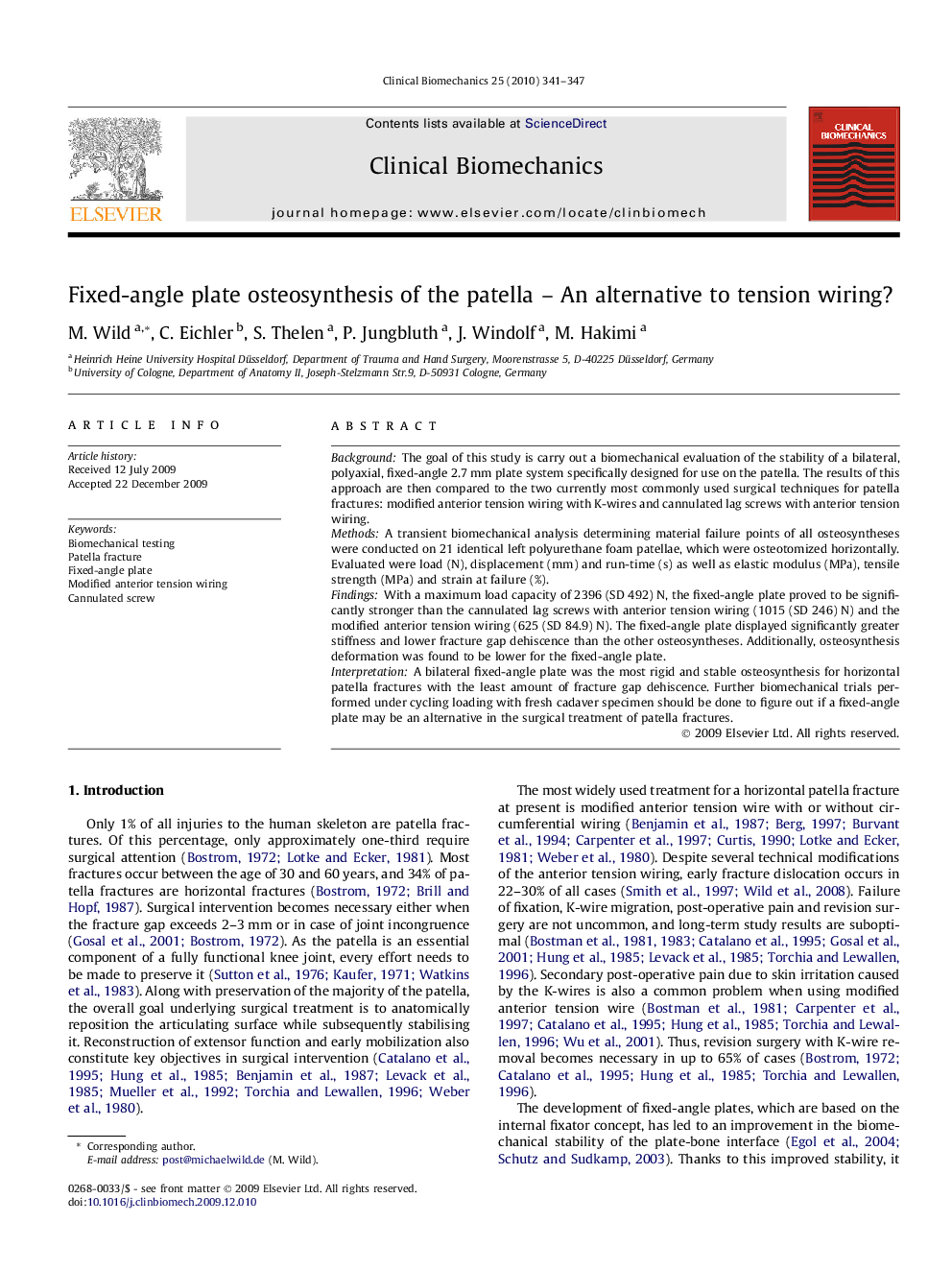| Article ID | Journal | Published Year | Pages | File Type |
|---|---|---|---|---|
| 4050619 | Clinical Biomechanics | 2010 | 7 Pages |
BackgroundThe goal of this study is carry out a biomechanical evaluation of the stability of a bilateral, polyaxial, fixed-angle 2.7 mm plate system specifically designed for use on the patella. The results of this approach are then compared to the two currently most commonly used surgical techniques for patella fractures: modified anterior tension wiring with K-wires and cannulated lag screws with anterior tension wiring.MethodsA transient biomechanical analysis determining material failure points of all osteosyntheses were conducted on 21 identical left polyurethane foam patellae, which were osteotomized horizontally. Evaluated were load (N), displacement (mm) and run-time (s) as well as elastic modulus (MPa), tensile strength (MPa) and strain at failure (%).FindingsWith a maximum load capacity of 2396 (SD 492) N, the fixed-angle plate proved to be significantly stronger than the cannulated lag screws with anterior tension wiring (1015 (SD 246) N) and the modified anterior tension wiring (625 (SD 84.9) N). The fixed-angle plate displayed significantly greater stiffness and lower fracture gap dehiscence than the other osteosyntheses. Additionally, osteosynthesis deformation was found to be lower for the fixed-angle plate.InterpretationA bilateral fixed-angle plate was the most rigid and stable osteosynthesis for horizontal patella fractures with the least amount of fracture gap dehiscence. Further biomechanical trials performed under cycling loading with fresh cadaver specimen should be done to figure out if a fixed-angle plate may be an alternative in the surgical treatment of patella fractures.
